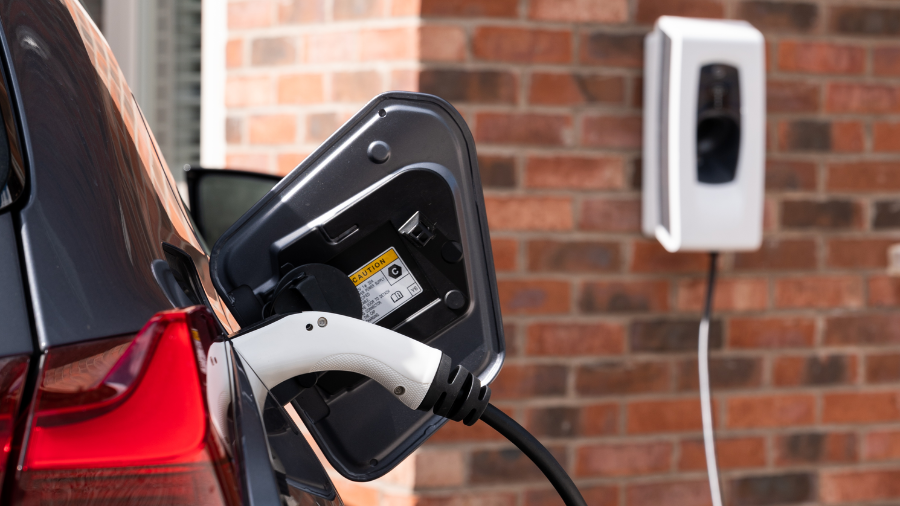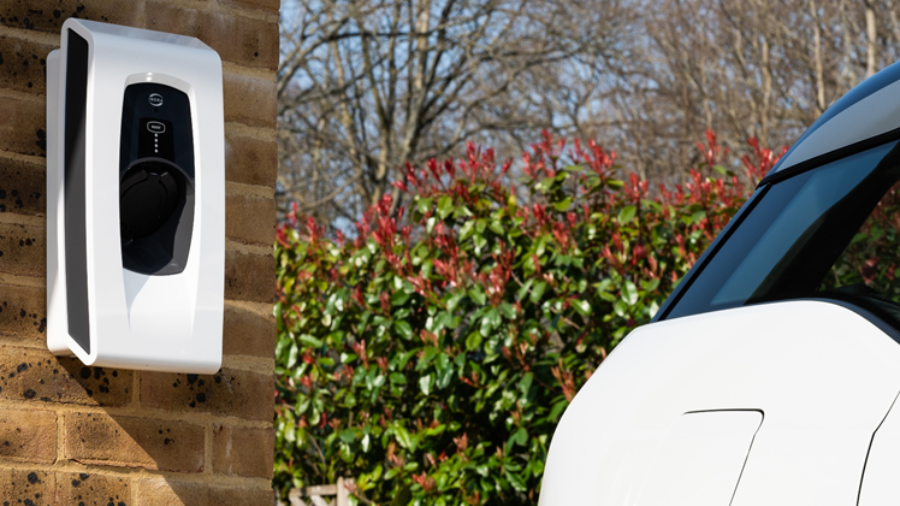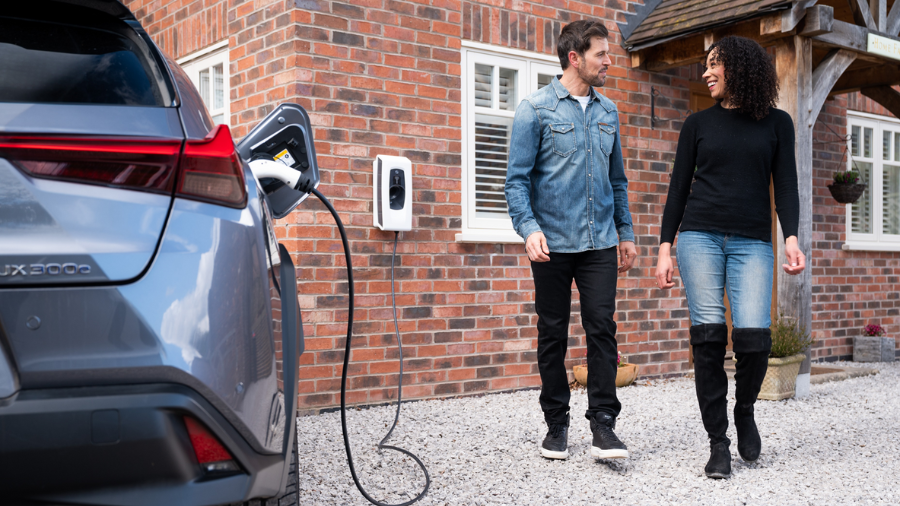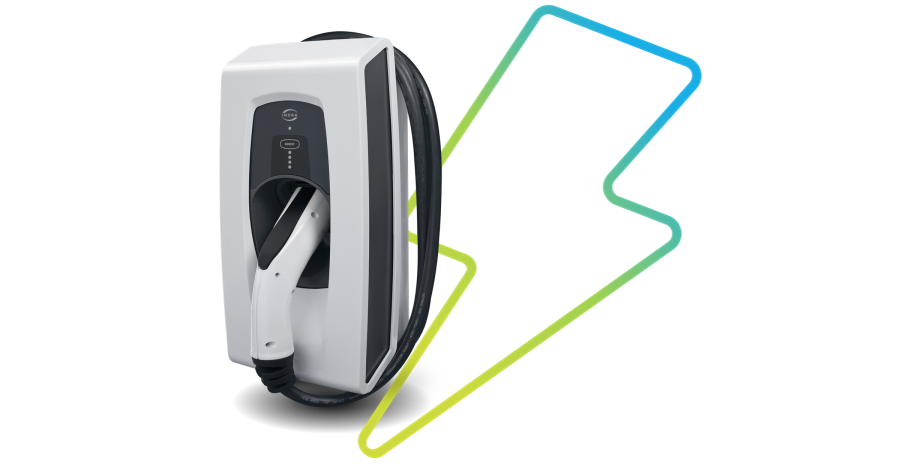The Ultimate Home Charging Guide
Electric car chargers are a key part of the switch for many who go electric and charge at home. Here our ultimate guide gives you the lowdown…
Energy and Charging
All you need to know about chargers and plugs
Can you do a long road trip in an electric car?
Do I have to have a charge point fitted at home?
How do I charge my electric car?
Does your driving style affect how far you can drive?
Does it take long to charge an electric car?
Do I need to charge an electric car often?
When’s the best time to charge an electric car?
The Ultimate Guide to charging an electric car
Are you ready to go electric?
Want to know if an electric car is the right choice for you?
Join in with our simple online quiz to find out more.
How do you charge an electric car at home?
Most electric car owners use a home charging point. These are dedicated devices that you install so you can plug in and charge when you’re at home. They’re weatherproof and are specially designed to safely charge your electric car.
Home chargers use a normal domestic electricity supply (known as a UK domestic AC single phase supply) to give speeds of up to 7kW.
How long does it take to charge an electric car at home?
If you drive a Nissan LEAF with a 39kWh battery, for example, it takes around seven and a half hours to fully charge – and that charge would give you 168 miles of range.
It’s rare to fully flatten a battery, though, so it’s unlikely to take that long. Most drivers keep their cars at 20%-80% to look after the battery.

When is the best time to charge an electric car?
For most of us, the cheapest and most convenient way to charge is overnight. You’re at home and energy tariffs can be cheaper. This is also the time of day when more of the grid’s energy is coming from renewables – but this changes according to your energy company and tariff.
Smart chargers have intelligent built-in features to manage your car’s charge. You can set charging times and schedules. When you enter your energy provider and tariff they can charge automatically while you sleep or when energy is cheapest.
You can also check on your car’s battery while it’s charging and see your stats from a smartphone app. Some smart chargers also let you use energy from solar panels on your home, so you can use free power from the sun rather than from the grid.
Electric car chargers usually have a tethered connection. This is a permanently attached cable and charging socket.
Some chargers are ‘untethered’ so you can plug in different cables. This is useful if you have more than one electric car with different cables or if you think you might want to change your cable length.
Most tethered chargers use a Type 2 cable, which fits all new cars in the UK. It uses a 7-pin plug, often called a ‘Mennekes’.
You might sometimes see Type 1 cables, which use 5 pins. They’re getting rarer and rarer though, as they were only used on early Nissan LEAF models, the first-generation Kia Soul EV and the Mitsubishi Outlander PHEV.
Yes – there’s a grant of up to £350, or 75% off the cost to buy and install a socket, whichever amount is lower, for people living in a flat, apartment or rental property in the UK to install an electric car charger.
To qualify for the OZEV (Office for Zero Emission Vehicles) grant, you’ll need to:
- show you’ve recently bought or are leasing an electric vehicle
- show that off-street parking is available at your property, and
- have your landlord’s permission if you’re a tenant.
Also, you can only get the grant when you buy your first electric car, and you can’t have more than two OZEV-funded chargers at the property already.
How do you install an electric car charger at home?
Once you’ve decided which charger is right for you and whether you’re eligible for an OZEV grant, it’s time to pick an installer.
To install Indra Smart PRO chargers, we partner with Plug Me In, who can install across the whole country.
Our installers will start by visiting you to check over the details. This survey means they can do the essential electrical safety checks before they set a date to fit your charger.
Sometimes you might need to upgrade your distribution board or other electrical components first, but your installer will explain the details.
They’ll also agree where to install the charger with you. They need to follow electric car charger installation guidelines and the latest regulations, as well as checking where your nearest power supply is and making sure you can park off the street.
Then on your installation day, they’ll fit your charging station and make sure the charging cable is in a safe place. It normally takes about three hours, but it’s a good idea to be available for the whole day just in case.
Before they leave, they’ll register the charger, set up your details and carry out various tests to make sure things are working properly. Then they should show you how to use the charger and how to install the app, as well as help you download the app onto your phone, tablet or computer. As it’s a smart charger, you can check it and control it with the app whenever you’re online.

Can home car chargers use energy from solar panels?
Yes they can – and it can make a big difference when the sun is shining. But you’ll need to do your homework first…
First, you’ll need a solar-compatible charger. Some just work, others need a bit of extra hardware and some don’t work at all.
Second, you’ll need enough power from your solar panels to charge your car and your house. As a rule of thumb, you should aim for about 8-12 panels facing in a direction that gets plenty of sun. This should give you enough power – for example, the Indra Smart PRO charger needs a minimum of 1.4kW/6A to charge a car.
Then – once you’ve got the right charger and you’re generating enough power – you can drive your sunlight-powered car!
This is one of the big challenges for people who want to go electric but who don’t have their own drive.
The most common choice is just plugging in to a destination charger – either near your home or at work. If you can make it work, it might be the best option.
Otherwise, some councils offer on-street residential parking – so it might be worth talking to them. Different solutions include lamp post chargers, free-standing units on the pavement, or telescopic chargers.
While you might sometimes see cars parked up with a 3-pin cable running across the pavement, we don’t recommend it.
There are a few questions you should ask when you’re choosing which charger is right for you:
- How smart does it need to be? Not all smart chargers are the same: some use simple timers you need to set while others (like the Indra Smart PRO) have advanced features like smart scheduling and continuous updates.
- Tethered or untethered? Tethered chargers have a cable permanently connected, which makes it much simpler to plug in when you get home. Untethered means you can remove the cable: either to swap it for a longer or shorter cable or for one with a different socket.
- Do you have solar panels? If so, carefully check that you choose a compatible charger.
- How does it look? Most drivers want something subtle, especially if it’s on the front of their house, but you can choose from plenty of different styles, from the mild to the wild.
Why choose an Indra Smart PRO charger from ElectriX?
The Indra Smart PRO charger is designed, engineered and manufactured in the UK. It’s one of the smartest on the market and it works with all electric cars. What we really like about the Smart PRO is that it helps you charge from home when it’s cheapest – and it can charge quickly at speeds of up to 7.4kW.
We offer a complete home charging solution with Indra, a leading British EV charger and smart energy technology firm – and we can get your charger installed for you too.
Our customers love how reliable and efficient the Smart PRO is, while also including smart features like personal charging schedules, solar matching compatibility, a quick boost function, automatic software updates and patented home fuse protection. It has a five-year warranty as standard.
You can also check your status, update preferences and track your home charging history directly from your phone with the Indra app.
What’s included with an Indra charger from ElectriX?
We also offer a straightforward installation programme with our nationwide installation partner, Plug Me In.
If you buy from ElectriX, your charger will include a site survey and installation, with up to 15 metres of mains supply cabling. You’ll also get a 5-metre charging cable. You can connect it via Wi-Fi, 4G or an ethernet cable.
There’s a bit of price variation but you should budget about £1,000 for a quality charger like an Indra Smart PRO.
What does that include? First of all, it should include a well-built and well-designed smart charger – plus a site survey, standard installation and VAT. It’s also worth checking whether you’ll need to pay extra for things like internet connections and integration with a home solar system.
You might also have to pay for any extra electrical equipment you need. Before they do anything, your installer will check with the electricity company that runs the energy network to your home. If they insist on adding or changing anything like an isolator switch or distribution board, that will add to the bill too.
There are a few ways you can check. Your car can tell you how much juice it has on its dashboard display, as well as how much range that gives you – and plenty of other details about your battery. Most modern cars have an app, too.
You can also check your charger. A good quality charger will have a display or indicators on it, while the most advanced smart devices will have a companion app.
How much does it cost to charge an electric car at home?
It depends on your tariff but you can charge for as little as 2p per mile.
A lot of electric car drivers choose an off-peak tariff which is cheaper at night (though more expensive during the day). That’s because there’s less demand for energy in the middle of the night, so it’s much cheaper to buy. And if you’ve got a smart charger you don’t even need to turn your charger on or off during the night: it just happens automatically.
They’re not very popular yet, but some energy suppliers also offer variable tariffs. These use smart technology to change your prices depending on how much demand there is.
Can you power your home with an electric car?
Using a car to power your home is called ‘V2H’ or ‘Vehicle to Home’ technology. This promising new technology lets you use your car’s enormous battery to power your home.
As well as being very useful during power cuts and unexpected outages, it also lets you store up either solar power from your roof panels or off-peak electricity you’ve bought cheaper at night.
There have been several trial schemes already but it hasn’t yet come to market.

Do home chargers have any common problems?
According to the experts at Indra, there are two common problems. The first is when a charger’s internet connection isn’t good enough. The charger will still work but you won’t be able to use the charging app. In this case, they recommend running a cable to your charger for internet.
The second is ‘nuisance tripping’, when the charger keeps turning off – normally because of something happening with your home’s electricity supply. Advanced chargers like the Indra Smart PRO have technology to deal with the problem.

Get a smart home charger
Top up your car at home with a smart charger.
- Smart charging – schedule charges when you need them and when energy is cheapest
- Easy installation – book an appointment with approved installers
- Advanced charging tech – we’re working with smart charging experts